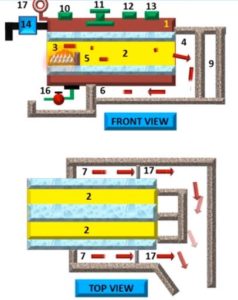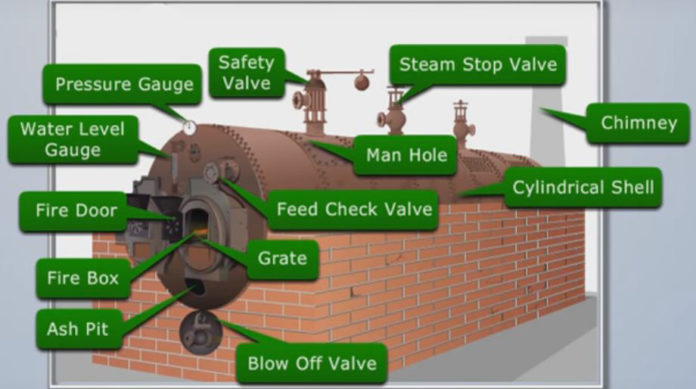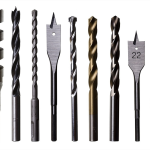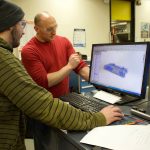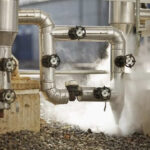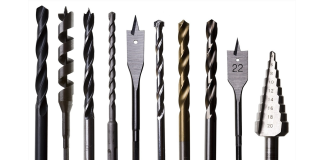Lancashire boiler is the reliable has the simplicity in design easy in operation and less operating and maintenance costs. And it is commonly used in sugar mills and industries. Where a lot of steam is required. This type of boiler is horizontal in shape and it is stationary and fire tube boilers and it has internally fired and natural circulation boiler. These types of boiler also needed where the larger reserve of water and stream are required. The specification of oil and gas-fired boilers are as follows The cylindrical shell whose diameter that varies from 1.75 to 2.75 meter. Length of the shell that is 7.25 to 9 meter.
Internal fire tube having 2 in number generally used. We can say it has two internal flow tubes whose diameter that is .4 times the size of the Cylindrical shell. The maximum working pressure is 16 bar. The steam capacity of this boiler is 9000kg/h. And the efficiency is 50 to 70%. So these are the specifications of the Lancashire boiler and now with the help of a diagram. We try to understand the main parts and their working of the Lancashire boiler. The Lancashire boiler that generally consists of a long cylindrical external cell. It is generally built up of steel plates.

- This blue lining that shows the passes of water inside of the cylindrical shell.

2. This is internal flow tubes. and these are used to provide access to the lower part of the boiler.

3. This is a fire Great or furnace And that is provided at one end of the flow tube. On which solid fuel is burnt. And the furnace that is placed at the front end of is bed they are known as the furnace tube. And the coal is introduced to the fire pool into the grate.
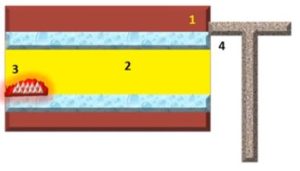
4. And here is the main flue here.
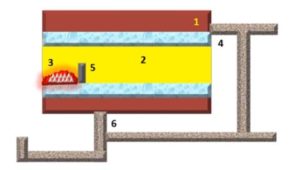
5. That is brick arch That is used to deflect the flue gases upward and the hot flue gasses after leaving that internal flue tubes to push down on the bottom flue. So here the brief. Word fire bridge at the back of the gate to prevent the entry of the burning coal gases into the interior of the furnace tube.

- This is the bottom view. The hot gases that are coming from the internal fire tube through the main flue and then to the bottom flue. The hot flue this is after leaving the internal flue tube passed down to the bottom tube or bottom flue.
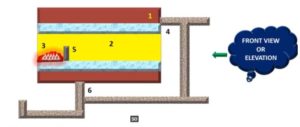 So this is a front wheel or elevation of the Lancashire boiler and when we see the side of this boiler
So this is a front wheel or elevation of the Lancashire boiler and when we see the side of this boiler

we can see this is a cylindrical shell. containing the water. And these two are the internal glue to these are 2 in numbers 7 that is the side view number six that is the bottom view.
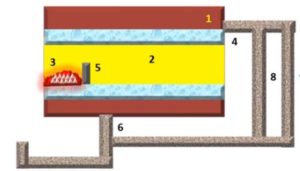
- This is the main view after passing the flue glasses from 6 then moved towards to number 8 and from 8 they’re moving through the atmosphere through the chimney. So we can say that the combustion product grade passes up the backend of the furnace tube. And then in downward that action and thereafter they moved to the bottom channel or bottom flue up to the front end of the boiler. Where they are divided and pass up to the side view. These are some mountings which are generally used.
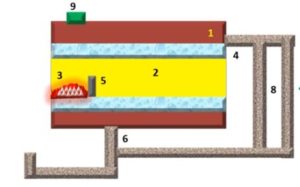
- This is the spring loaded safety valve. These are used for safety purpose spring loaded safety valve
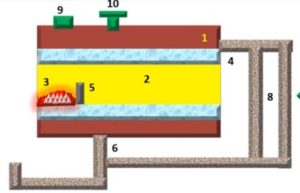
- This is the stop valve.
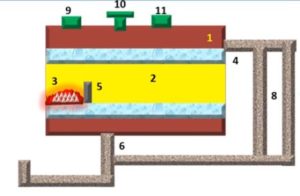
- High Steam low water safety valve.
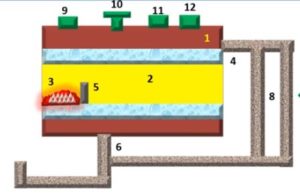
12. This is the main hole
As I already mention the First one is spring loaded safety valve and the next one is stop valve so that the spring loaded safety valve is used for locomotives and marine engine both. But lever and dead weight types valves are unsuitable for evasive regions. valve must be spring loaded and unaffected by vibration or deviation from the water. because as we discussed that the high steam low water safety valve stop function first one is the steam automatically escape out when the lever level of water falls below a certain level. and it automatically discharges of the excess time. When the pressure of steam rises above a certain pressure. And this is a single device in which two valves were combined in one to serve the above mentioned by purpose.
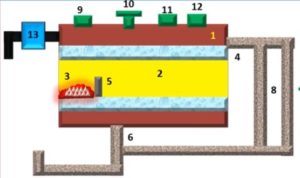
13. This is a feed pipe that is generally used for the feed water when we require.
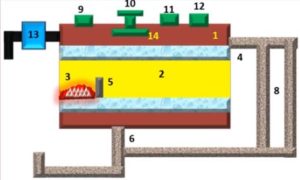
14. So anti priming pipe separate out water as far as possible. And feed pipe controlled by a feed valve and used for feeding water uniformly. When the boiler is strongly heated. And steam generated carries a large quantity of water In the steam space that is known as priming for that purpose we are using anti priming pipe.
15. This is a blow of Coke which removes the mud that settles down at the bottom of the boiler. By forcing out some of the water. And it is also used to empty water in the boiler. Whenever required for inspection.
And then number twelve takes the manhole are provided at the top and the bottom of the boiler. for cleaning and repair purpose.
16. This is the pressure gauge. The function of the pressure gauge is to measure the pressure exerted inside the vessel. And the gases that is usually mounted on front top of the cell.
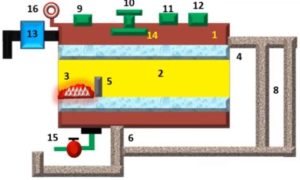
And it is usually constructed to indicate the maximum working pressure.
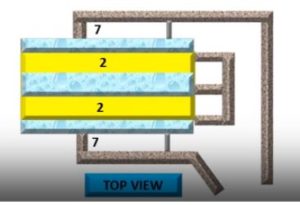
.So these are the cells and these are the water lines and these are internal fluid tubes. The brake arrangement. 7 that shows the side view.
17. This is the damper.
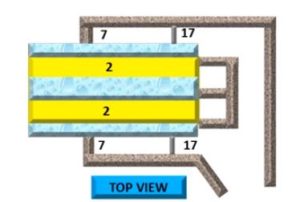
The damper is fitted. At the end of the side view. That means the rate of flow of air. And thus regulate the rate of generation of steam. These dampers are operated by a chain passing over a pulley on the front of the Boiler.
And always start working when the furnace starts to work and coal start to burn. These are the few gases that are moving from the internal fire which Heat the water converted into steam than from the main fuel they’re passing through the Bottom flue as you can see in front view. And from the side view, we can see how these flue gases move from side flue to the bottom view from 6 to 7 number. In its top view, we can see how these are discharged Out of the chimney 7 then from the damper.
These are moving down. These are moving outside. We can see the atmosphere with the help of chimney. So This is the whole working of Lancashire boiler. And as I already mentioned above it is horizontal. Stationary. Fire tube. Internally fire and natural circulation of fluid. So these are some. Important points of Lancashire boiler. And we have learned how it works. And what are the main components of the Lancashire boiler.
